Dynamic Constraint Relationships
3D design and shaping is more than just sweeping and extruding. Once you have the basic shape constructed, you really want to be able to modify its shape. Many CAD and surface design programs give you little or no shape control after the surfaces have been created. They force you to delete the surfaces, change the original defining curves, then re-sweep or re-extrude their shapes. This can be very time-consuming if you have to reconstruct a lot of geometry based on the surface that you have to modify!
Pilot3D gives you many ways to constrain geometry to avoid this re-generation problem.
In the boat design world, a common shape that has to be modeled is a chine hull consisting of two or more surfaces joined edge to edge. These multiply-connected surfaces are called polysurfaces in some 3D modeling programs. Amazingly, most modeling and CAD programs do not let you edit these shapes unless you "explode" or disconnect the surfaces at their edges. The surfaces will then separate if you move one of the edge points! This is completely unacceptable for shaping chine hull boats - AND for shaping most other types of objects where surfaces meet.
Long ago, New Wave Systems, Inc. solved this problem by allowing surfaces to remain tied or "bonded" together along common edges while allowing the full range of editing commands. If you move an edit point on an edge between two surfaces, then both surfaces get updated dynamically. This is done by defining constraints or relationships between geometric objects. These relationships are optional and are independent of the definition of the geometric entities. This means that you can add or delete these relationships when necessary.
We have expanded this geometrical relationship idea to cover many different types of constraints - fix a point to a curve, fix a point relative to another point, fix a point to a surface, bond surface edges, fix a curve to a surface, and fix a surface edge to the middle of another surface. (The constrained points are edit points on the curves and surfaces.) These are dynamic constraints. This means that when you move a point on one entity, all related or constrained entities update dynamically at the same time. It is also an open-ended technology - we can easily add more and more constraints in the future.
The unique aspect of our technology is that the constraints are independent of the geometry and are optional. They can be added or deleted at any time. We feel that this is very important. Some 3D modeling and CAD programs force constraints upon your model whether you want them or not. This may make the modeling process more difficult, especially if you have to go back and make major changes to your model. With our technique, you can apply the constraints only when necessary, or if you need to make major changes to your model, we allow you to un-constrain the model without affecting the shape or deleting any of the geometry.
Pilot3D also has the ability to mark a curve attached to a surface as a trimming curve for the NURB surface. You can drag the edit points on the curve and watch the trimmed surface dynamically update itself. You can even turn on the overlaid curvature curve for the trim curve to use for smoothing. Most all other trimmed NURB surface modelers (even the expensive ones!) force you to un-trim the surface, redisplay the original curve, edit the curve shape, and then re-trim the surface by projecting the curve through the surface. This is not very convenient for fairing or if you need to have other geometry constructed based on the shape of the trim curve. Our attached curve method for trimming will also work for trim curves that cannot be created by simply projecting a curve through a surface.
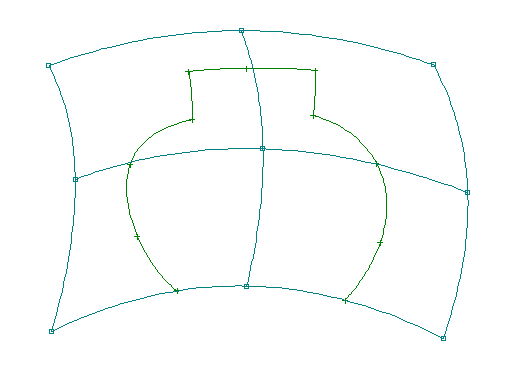 |
NURB surface showing attached NURB curve with edit points. This curve was created and attached to the surface in one step. (Note that the curve is a combination curve and polyline.)
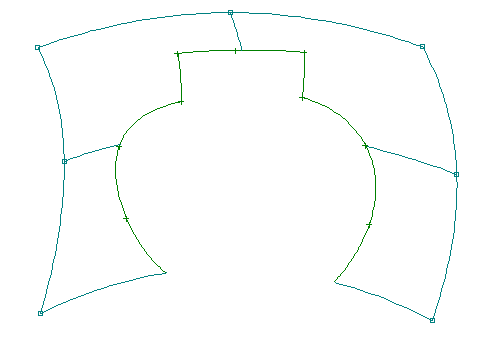 |
NURB surface after trimming with attached NURB curve
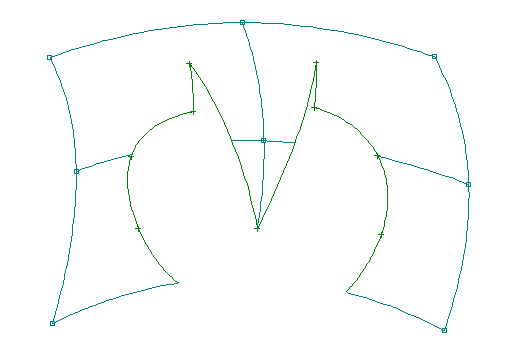 |
NURB surface after dynamically moving edit point on NURB curve
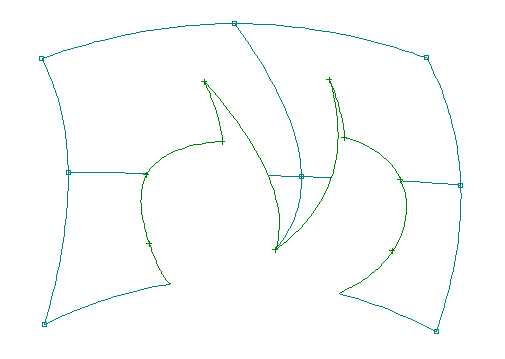 |
NURB surface after moving edit point on the NURB surface
The NURB curve is relationally attached to the NURB surface so that you can dynamically drag any edit point on the curve or surface. Remember that a "curve" in Pilot3D can consist of both curved and straight line segments. You can also turn on the overlaid curvature curve for this attached curve.
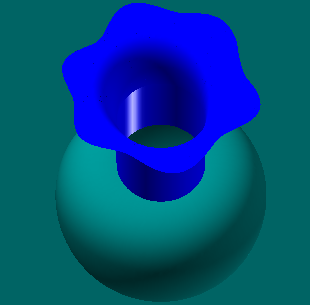
This vase was made by revolving a cross-section curve 360 degrees to automatically create 3 surfaces; one for the base, one for the straight stem, and one for the flair at the top. The 3 surfaces were automatically "bonded" together so that you could edit its shape (using points ON the surfaces) locally anywhere without the surfaces separating. The curved shape at the top of the vase was created by "attaching" a curve to the top surface, trimming the surface shape and then changing its shape by moving the edit points that define the trim curve. No other software at any price allows you to do this! You would have to un-trim the surface, change a shape curve, and then re-trim the surface by projecting the curve onto the top surface. Pilot3D allows you to directly edit the shape of the trim curve AND show the curvature curve smoothing curve at the same time. This vase took less than 5 minutes to create, AND, it can be edited directly, without separating the surfaces, using edit points that lie ON the surfaces and trim curve.
Don't settle for a program that either forces you to re-generate your model completely or forces you to include constraints for everything. Pilot3D allows you to use dynamic constraints when and where you want.